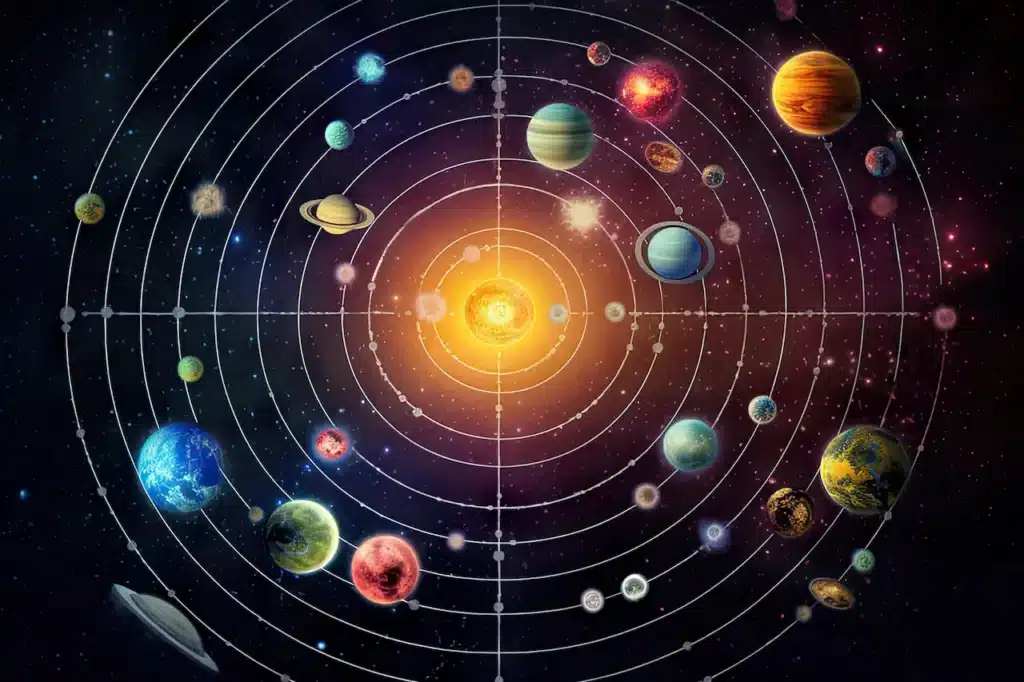Planetary Alignment: The Five Bright Planets Are Aligned
The five brightest planets of our solar system — Mercury, Venus, Saturn and Mars — are lined up in the sky for the first time in nearly 20 years. This rare celestial display is breathtaking. It’s a once-in-a-lifetime event that is visible for the first since 2005.
The planets are arranged in a straight line. They begin low in the east and rise high to the north. This amazing arrangement reflects the path taken by the sun as it crosses the sky. It follows the so-called ecliptic, an orbital plane that all planets share, including Earth. Senior astronomer Dr Tanya Hill at Melbourne Planetarium explains that “this alignment is a representation of the plane of our solar system.” This alignment is evidence that the Sun and all planets are orbiting on a flat plane.
Set your alarm for early to catch this rare alignment. It is best to view the planets just one hour before sunrise when they are most visible. Mercury is the newest morning object to join the list of planets visible since the beginning of the year.

Hill says that Mercury is the faintest planet and will initially appear low in the sky. It may be hard to see at first. Mercury will gradually rise in the sky each morning until it is positioned below Venus by early February.
The International Space Station will pass over Australia, adding even more excitement to early risers. From Brisbane, Sydney and Melbourne, the ISS can be seen on February 5th.
Mark your calendars and set your alarms to not miss the extraordinary alignment of the planets as well as the ISS, which will occur in early February.
All 5 Bright Planets will be visible in December 2022
The ancient stargazers called the five planets Wanderers because they didn’t have a fixed position among fixed stars. Mercury, Venus Mars Jupiter Saturn are all bright enough to be seen with the naked eye.
You can see all five planets in the evening skies starting around the second week in December. You’ll have to wait until just after sunset, and you must also have a clear evening sky. The Southern Hemisphere will have a better view of all five planets due to the way they are angled across the sky. Mercury and Venus are close to the sunset. Averted vision is a great trick for observing faint objects, or bright objects like Mercury and Venus early in December. Or… scan using binoculars.
Mars, Jupiter, and Saturn are visible for many months. Mars, the brightest reddish light in the eastern sky, is located farthest east. On December 8, the red planet was in opposition to the sun. Mars is now at its brightest for the next two years.
Along the path of the sun, you can find Mars, Jupiter, and Saturn. For months, the two gas giants have been a good target in our evening skies.
Venus and Mercury will become easier
Mercury and Venus passed too close to the sun last month to be seen. The planets were on the opposite side of the Sun from Earth. We’ve heard of people who have seen them after Sunset. Look for them about 30 minutes after the sunset. They may be visible as the sky darkens just before they disappear below the horizon. Mercury will be back in the sunset’s glare by the end of the year, but both will become easier to see as the month progresses. Between now and then you will see both Venus and Mercury just above the sunset horizon.
The Moon and Five Planets
Mercury and Venus were setting in the southwest as the moon rose in the east just hours after its full phase on December 8. You’ll next see the moon in close proximity to these evening planets after the New Moon on December 23. On December 24, you can see the young crescent Moon in the west, after sunset. As seen from North America, on December 25, the moon will appear between the innermost planets (Saturn) and the golden Saturn. On December 26, the moon will be next to Saturn.
The moon will then pass Jupiter and approach it on December 28-29. It won’t get to Mars until January 3, 2020.